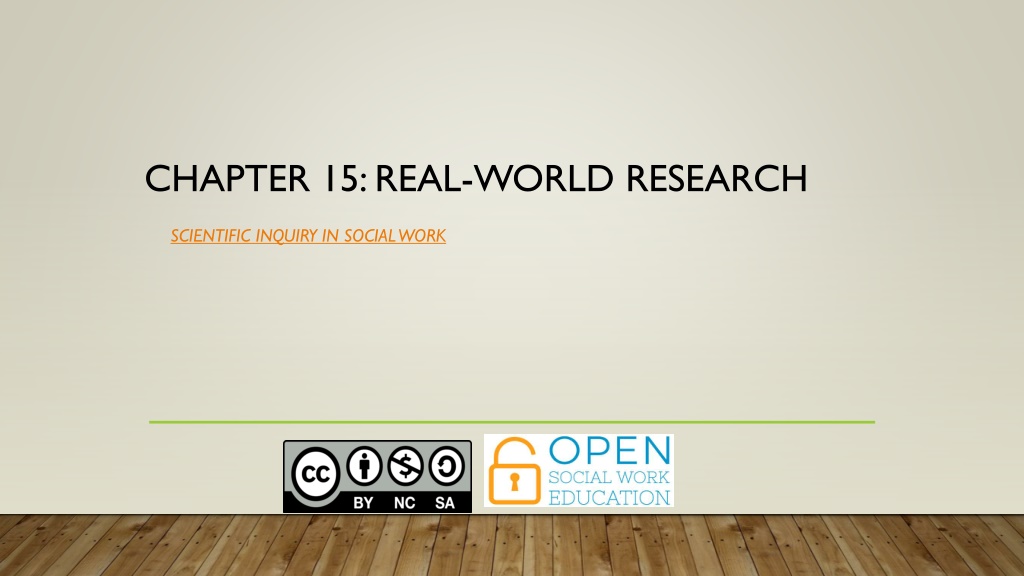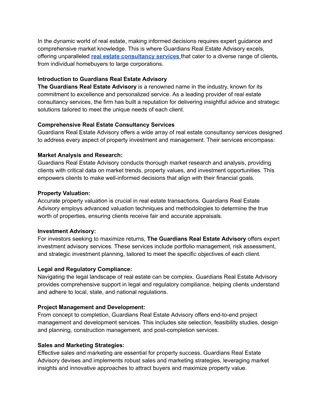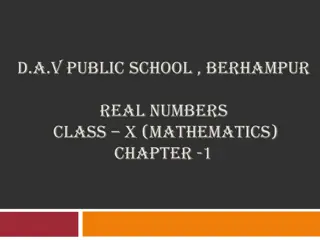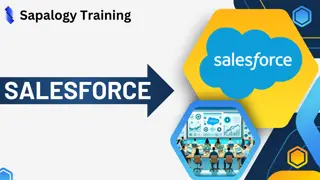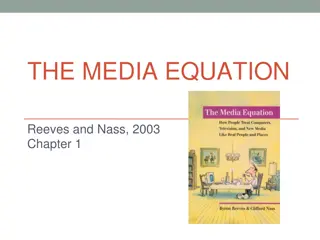CHAPTER 15: REAL-WORLD RESEARCH
This chapter delves into evaluation research, single-subject design, and action research commonly used in social work practice. It explores methods to assess program effectiveness, understand client progress, and evaluate interventions through practical examples and theoretical frameworks.
Download Presentation

Please find below an Image/Link to download the presentation.
The content on the website is provided AS IS for your information and personal use only. It may not be sold, licensed, or shared on other websites without obtaining consent from the author.If you encounter any issues during the download, it is possible that the publisher has removed the file from their server.
You are allowed to download the files provided on this website for personal or commercial use, subject to the condition that they are used lawfully. All files are the property of their respective owners.
The content on the website is provided AS IS for your information and personal use only. It may not be sold, licensed, or shared on other websites without obtaining consent from the author.
E N D
Presentation Transcript
CHAPTER 15: REAL-WORLD RESEARCH SCIENTIFIC INQUIRY IN SOCIAL WORK
METHODS SECTION NOTES You must remove any reference to "I", "me" throughout the whole paper. Instead talk about the study itself or "this research proposal". Be sure to include an example of your data collection instrument in an appendix for the final paper It can be a link to the full survey and or you can attach the whole instrument. Single subject = one participant compared to themselves Group design = compare data from multiple participants to each other or to different groups We can't show or definitely state causality....but you can say the study will help to explain or help to shed light on the potential effectiveness.
CHAPTER OVERVIEW The previous chapters have focused on how social work use social science research methods to understand the world. Social workers in practice may not always conduct research, but they still must use research skills to help their clients. This chapter will review three approaches to research that social workers will use while in practice. Evaluation research Single-subjects design Action research
EVALUATION RESEARCH How effective are our programs/policies? Inputs: clients, customers, people, etc. Program process: activities that constitute the program or intervention Outputs: direct products (# clients served, staff trained, reports, etc.) Outcomes: impact of program process Stakeholders: individuals and groups with interest in program Inputs -> Program Process -> Outputs -> Outcomes
ACTIVITY #1 Let s walk through a program you may not like: Drug testing people who receive TANF What is the Social problem? What is the target population? Assumptions about causes of the social problem and interventions needed Given the interventions of drug testing What do you need in order to implement this intervention (inputs) What does this intervention look like in practice (activities) What will this intervention produce (outputs) What do you hope will change as a result of this intervention (outcomes)
Literature Review on practice topics Understanding basic aspects of research design RESEARCH FOR PRACTITIONERS Evaluating practice and interventions Understanding one client s progress (single-subject design) Evaluating a practice or program in your agency (practice or program evaluation) Understanding intervention s impact with a group of clients (interviews, surveys, focus groups)
SINGLE- SUBJECTS DESIGN Repeated measurement of a dependent variable over time Baseline: period before the intervention during which a pattern emerges Stable line, trend (down or up), cycle Treatment: intervention done by clinician Graphing: x-axis= time; y-axis= dependent variable
Whats wrong with me? What treatment would you use? How would you know it worked? SINGLE-SUBJECTS DESIGN (CONTINUED) Data analysis Measurement in single-subjects design What are you trying to change in your client? What would indicate that your intervention is having an effect? Frequency, duration, interval, magnitude Who does the measuring? What instrument do you use? Level: amount Trend: direction Variability: spread Did you hit a specific score? Is it worth the cost? Does the client buy in?
Whats wrong with me? What treatment would you use? How would you know it worked? SINGLE-SUBJECTS DESIGNS Only one subject compared to themselves (Different than group design where comparisons are made between subjects) Usually A-B design A= Baseline measurement B= Intervention A-B-A design Measurement continues after intervention Baseline, intervention, second measurement A-B-A-B design Baseline measurement, intervention, second measurement, intervention
Create a case scenario in which you would use a single subjects design. What presenting issue does your client have? ACTIVITY #2 How will you measure changes in that issue? Which design would you use? What are some strengths and limitations of that design?
Stakeholders ACTION RESEARCH Empowerment Knowledge: whose knowledge is more important? Social justice
What are the primary requirements for experimental study design? 1. Pre/post measurement of an intervention 2. Random assignment and a control group REVIEW 3. Over 100 participants 4. Longitudinal data collection (#2) This benefits the study by allowing researchers to generalize to the larger study population. Any sampling that include randomization is a form of probability sampling.
Random selection = study participants are selected at random from the study population for inclusion in the study RANDOM ASSIGNMENT VS. RANDOM SELECTION Random assignment = essential to experimental or classical study design; study participants are assigned to the treatment or control group using a random procedure. Random means everyone has an equal chance of being in the treatment or control group. Random assignment increases internal validity. Random selection ensures external validity and allows the researcher to generalize to the larger population.
RANDOM SELECTION AND RANDOM ASSIGNMENT EXAMPLE Example: A researcher gets a list of all students enrolled at a particular school (the population). Using a random number generator, the researcher selects 100 students from the school to participate in the study (the random sample created using random selection). All students names are placed in a hat and 50 are chosen to receive the intervention (the treatment group), while the remaining 50 students serve as the control group. This design uses both random selection and random assignment. GOLD STANDARD
Nominal LEVELS OF MEASUREMENT & DATA ANALYSIS Ordinal Interval/Ratio In most social research the data analysis involves three major steps, done in roughly this order: 1. Cleaning and organizing the data for analysis (Data Preparation) 2. Describing the data (Descriptive Statistics): Mean, Median, Mode, Range 3. Testing Hypotheses and Models (Inferential Statistics) a. T--tests to compare averages b. Cross-tabs
